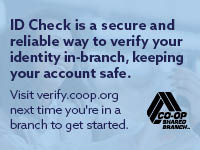 “I can’t wait to get my own car.” Sound familiar? Before you start shopping for a used car with a teenager you know, do some homework. It may save you serious money. Consider driving habits, what the car will be used for, and your budget. Research models, options, costs, repair records, safety tests, and mileage through libraries, book stores, and Web sites.
“I can’t wait to get my own car.” Sound familiar? Before you start shopping for a used car with a teenager you know, do some homework. It may save you serious money. Consider driving habits, what the car will be used for, and your budget. Research models, options, costs, repair records, safety tests, and mileage through libraries, book stores, and Web sites.
Cash or Credit?
Once you’ve settled on a particular car, you have two payment options: paying in full or financing over time. Financing increases the total cost of the car because you’re also paying for the cost of credit, including interest and other loan costs.
You also must consider how much money you can put down, the monthly payment, the loan term, and the Annual Percentage Rate (APR). Rates usually are higher and loan periods shorter on used cars than on new ones. Dealers and lenders offer a variety of loan terms. Shop around and help your teenager negotiate the best possible deal. Be cautious about financing offers for first-time buyers. They can require a big down payment and a high APR. To get a lower rate, you may decide to cosign the loan for your teen. If money is tight, you might consider paying cash for a less expensive car than you first had in mind.
Dealer or Private Sale?
The Federal Trade Commission’s Used Car Rule requires dealers to post a Buyer’s Guide in every used car they offer for sale. The Buyer’s Guide gives a great deal of information, including:
- Whether the vehicle is being sold “as is” or with a warranty
- What percentage of the repair costs a dealer will pay under the warranty
- The fact that spoken promises are difficult to enforce
- The major mechanical and electrical systems on the car, including some of the major problems you should look out for
The Buyer’s Guide also tells you to:
- Get all promises in writing
- Keep the Buyer’s Guide for reference after the sale
- Ask to have the car inspected by an independent mechanic before the purchase
Buying a car from a private individual is different from buying from a dealer. That’s because private sales generally aren’t covered by the Used Car Rule, or by “implied warranties” of state law. A private sale probably will be “as is”—you’ll have to pay for anything that goes wrong after the sale.
Before You Buy
Whether you buy a used car from a dealer or an individual, you should:
- Examine the car using an inspection checklist that can be found in magazines and books and on Internet sites that deal with used cars
- Test drive the car under varied road conditions—on hills, highways, and in stop-and-go-traffic
- Ask for the car’s maintenance record from the owner, dealer, or repair shop
- Hire a mechanic to inspect the car
Other Costs to Consider
There’s more to buying a car than just paying for it. Other items to budget for include insurance, gas, maintenance, and repairs. To help save money, compare coverage and premiums with several insurance companies. Buy from a low-price, licensed insurer, or add your teen to your policy. Some companies offer discounts to students with good grades. Remind your teenager that it pays to drive safely and observe speed limits. Traffic violations can cost money in tickets and higher insurance premiums. Next, pump your own gas and use the octane level that your owner’s manual specifies. Third, keep your car in safe driving condition. Following the vehicle’s maintenance schedule can help forestall costly repairs. Finally, look for a mechanic who is certified, well established, and communicates well about realistic repair options and costs. Find one who has done good work for someone you know.
Provided Compliments of culink.com


